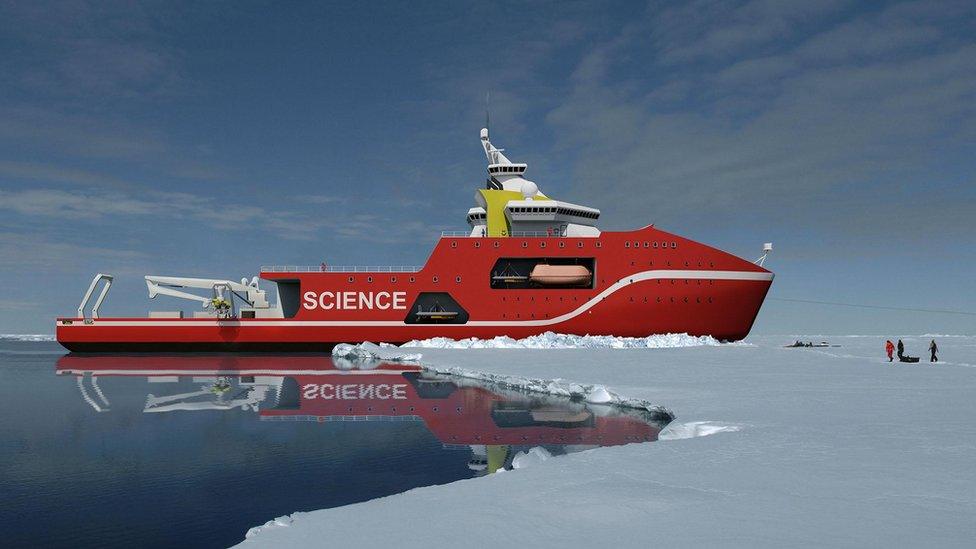Name sought for new UK polar ship
- Published
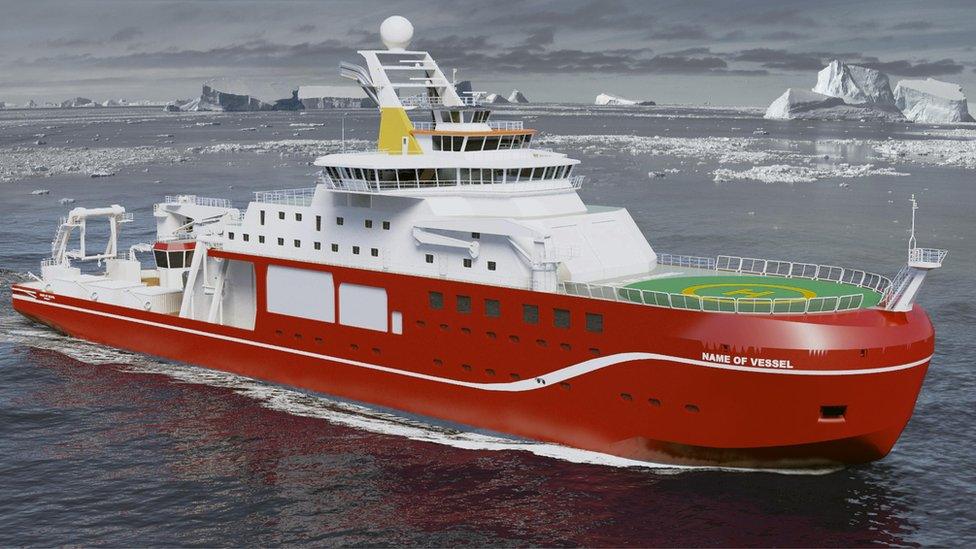
The new ship should start operating in 2019
The public are being asked to name the UK's new polar research ship.
The £200m, 15,000-tonne, 128m-long vessel is being built at Cammell Laird on Merseyside, and is due to become operational in 2019.
Anyone can propose a suitable name on a special website, external which will accept ideas up until 16 April.
The new ship will replace the existing polar fleet - the RRS James Clark Ross and RRS Ernest Shackleton - and work in both the Arctic and the Antarctic.
Names that have featured on previous UK research vessels will not be used again. But beyond that restriction, the possibilities are wide.
The Natural Environment Research Council (Nerc), which manages British polar science, says it is looking for something inspirational - something that will exemplify the ship's work.
The chosen name doesn't have to be that of a famous polar scientist; it could just as easily be the name of a place or phenomenon.
For example, the German polar research vessel is called Polarstern, or Pole Star; and the ship used regularly by Australian Antarctic scientists is called Aurora Australis - another name for the Southern Lights.
"Nerc's new ship will help put the UK at the cutting edge of polar research," said council chief executive, Prof Duncan Wingham.
"Built in the North West of England, she will help bring an economic boost to the region and to the UK shipbuilding industry.
"Today we are launching our campaign to bring our ship to the UK people, asking for their help to find her a name that encapsulates her role at the forefront of UK science.
"We are excited to hear what the public have to suggest and we really are open to ideas."
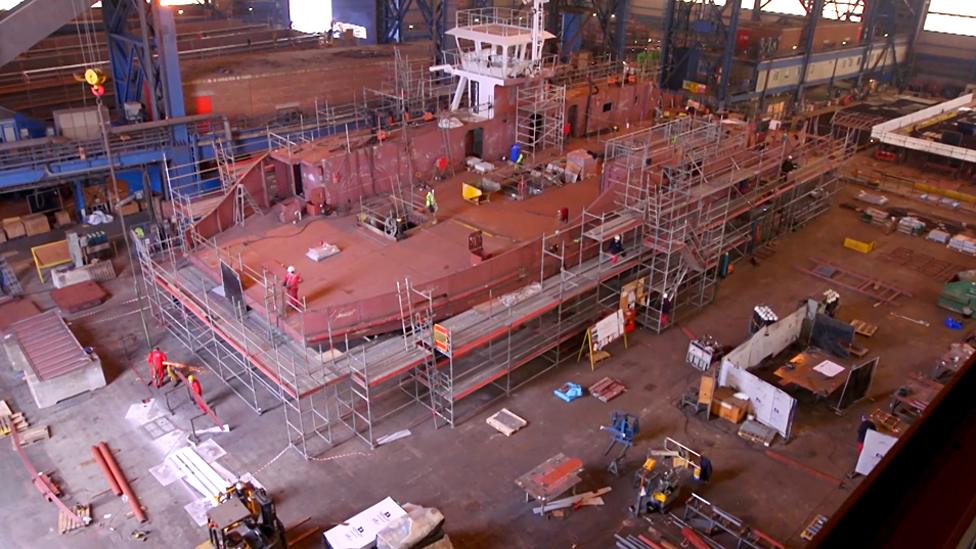
The ship contract will secure 400-500 jobs at Cammell Laird
The funding of a new British RRS to work in icy seas was announced by Chancellor George Osborne in April 2014, with a contract to build the ship being given to Cammell Laird last year.
Since then, the Merseyside shipbuilder has been going through a detailed design exercise and expects eventually to be employing 400-500 people on the vessel's construction.
The ship will feature a helipad, cranes, onboard labs, and have the ability to deploy subs and other ocean survey and sampling gear.
Some of this equipment will go through an enclosed "moon pool", or "wet porch", inside the vessel.
Dr Robert Larter, a geophysicist working with the British Antarctic Survey, says the ship will have greatly increased scientific capabilities, especially in relation to the importance of the Southern Ocean and the role it plays in Earth's climate system.
"This is an area that has the most powerful ocean currents in the world - the Antarctic Circumpolar Current is the link between all the world's oceans; and the seas around Antarctica are the 'factories' of most of the world's bottom water which drives the over-turn of the oceans. So, there's a lot to learn and this new ship will help us do that," he told BBC News.
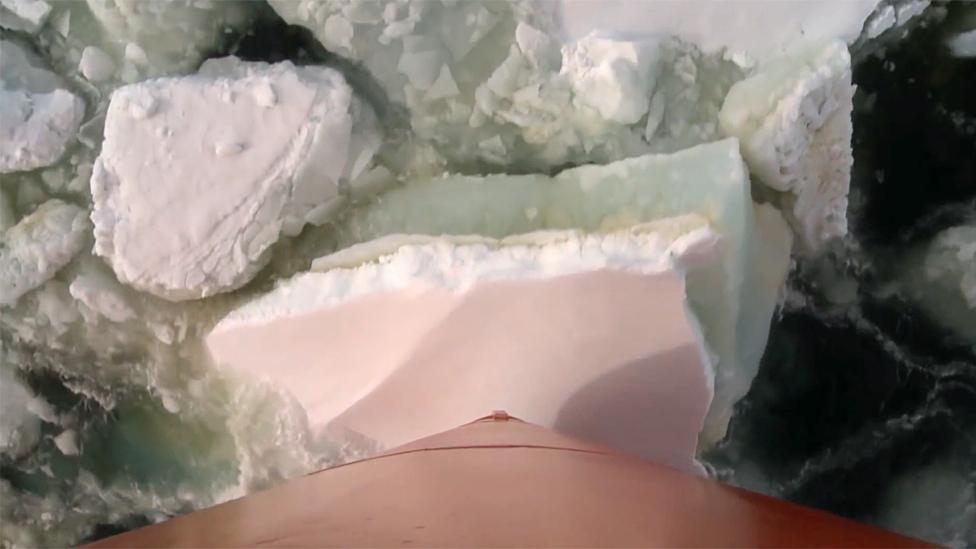
The ability to break over a metre of sea ice will enable the ship to get to more research locations
The introduction of the new ship does mean the UK will be reducing its polar fleet from two to one vessel.
But the hope is this reduction in capacity can be mitigated, in part, by the efficiencies that come from operating a brand new super-ship, external.
It will have to take on not only all the research activities done predominantly now by the RRS James Clark Ross, but all the logistics work done mostly by the RRS Ernest Shackleton.
The new ship will certainly have greater individual endurance than its predecessors - the number of days it can operate at sea; and with its ice-breaking capabilities will also be able to go to places the earlier vessels could not.
"It's amazing to think of the places we have gone with the existing ships, but there is always an element of risk," said Dr Larter.
"With this bigger, more powerful ship, we'll have the confidence to go to those places, knowing also that we will be able to get out.
"With sea-ice, that's always a factor that plays on the mind of a captain: you can get in, but can you get out? Will you get stuck in ice?"


The ship will have a length of 128m and a beam of 24m
It will have a gross tonnage of around 15,000 tonnes
20 laboratories, stores and workshops will be on board
It will be self-sufficient to operate for up to 60 days
This means it could cover roughly 30,000km
The ship will have space for two small helicopters
It will launch aerial and ocean robots, and seabed drills
Up to 90 scientists and support staff could live aboard

Jonathan.Amos-INTERNET@bbc.co.uk, external and follow me on Twitter: @BBCAmos, external
- Published12 October 2015
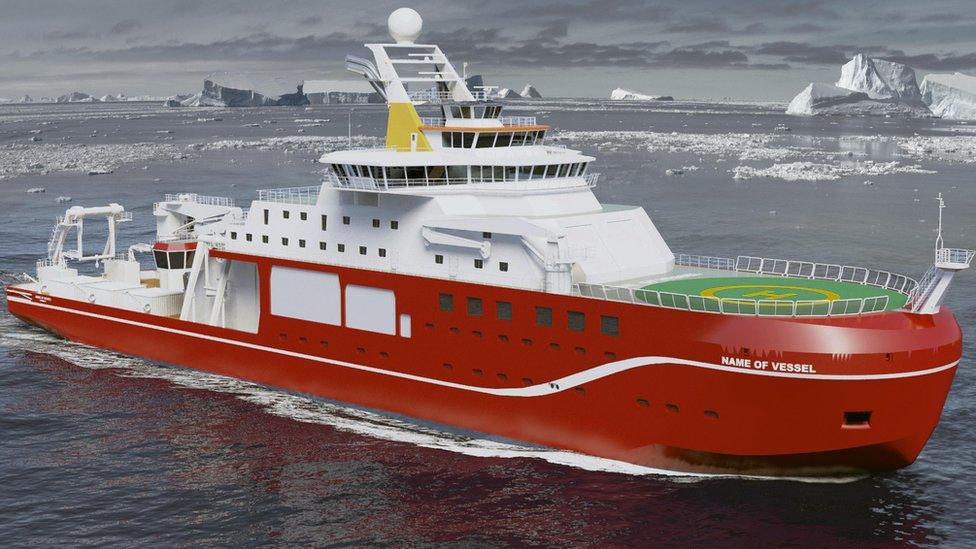
- Published25 April 2014
